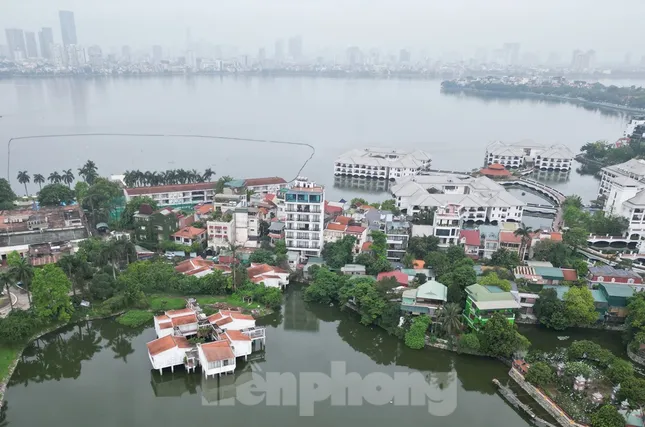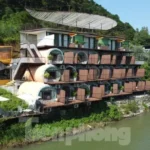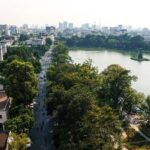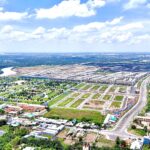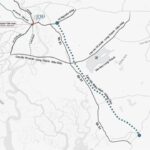At the commencement ceremony of the Tu Lien Bridge project on May 19, Mr. Nghiem Gioi Hoa, founder of the Pacific Construction Group (China), stated: “The Tu Lien Bridge project is of great significance and will have a substantial impact on Hanoi’s transportation system. In the inner city, the bridge’s approach road directly connects to West Lake.”
“Therefore, if we could construct a tunnel extending the approach road of the Tu Lien Bridge underneath West Lake, it would be an excellent infrastructure project for Hanoi and the Tu Lien Bridge,” Mr. Nghiem Gioi Hoa suggested through an interpreter.

West Lake. Photo taken at the proposed tunnel location.
Mr. Nghiem Gioi Hoa argued that constructing a tunnel beneath West Lake would be cost-effective, comparable to building a bridge. Additionally, it would minimize land clearance, reduce the need for extracting large amounts of mud and water from the lake, and result in significant cost savings related to construction.
Regarding the utilization of the tunnel, Mr. Nghiem Gioi Hoa suggested that in addition to vehicle lanes, separate lanes could be designated for pedestrians and tourists wishing to explore the tunnel on foot.
The West Lake tunnel is not part of the current development plan
Representatives from Hanoi’s planning and construction sectors acknowledged the proposal’s merit but highlighted its challenging execution.
Both the Tu Lien Bridge project investor and the Department of Construction commended the idea, suggesting that instead of ending at Nghi Tam Street, the traffic flow from the Tu Lien Bridge towards Dong Anh could either connect to the Nghi Tam intersection or continue through the tunnel to Thuy Khue Street on the opposite shore of West Lake. This proposal aims to reduce potential traffic congestion and provide a more direct route into the city center.
Additionally, the tunnel alignment would enhance connectivity for the planned Hanoi Urban Railway Line 5 (Van Cao – Hoa Lac), which the city plans to commence construction on later this year.
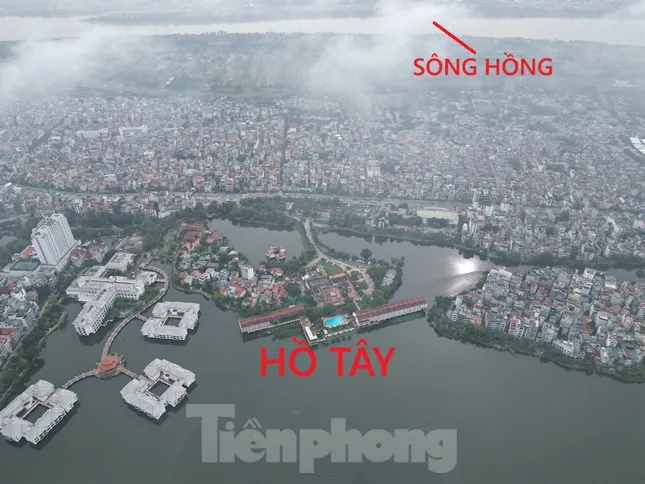
Proposal to build a tunnel under West Lake to extend the Tu Lien Bridge approach road across the Red River to Thuy Khue Street.
However, representatives from the Tu Lien Bridge project investor and the Department of Construction pointed out that the current planning for the West Lake area and Hanoi’s road and bridge network does not include a project to build a tunnel underneath the lake. Moreover, West Lake holds historical and cultural significance, making it challenging to undertake large-scale construction projects within or on its waters.
West Lake is Hanoi’s largest lake, spanning 500 hectares with a circumference of 17-20 kilometers. It is not only a renowned scenic spot but also an integral part of the cultural and spiritual life of Hanoi’s residents.
Beyond its natural beauty, the West Lake area boasts numerous historical sites and cultural landmarks, including Tran Quoc Pagoda (Hanoi’s oldest pagoda), Tay Ho Temple, Quan Thanh Temple, and Kim Lien Pagoda, to name a few.
Reshaping the Real Estate “Landscape”: Redirecting Capital with Regional Strategies
The Vietnamese real estate market is entering a new cycle, and trends indicate that capital is no longer solely focused on the “traditional bipolarity” of Hanoi and Ho Chi Minh City. Instead, a shift is occurring, with emerging development hubs gradually sharing the limelight.
The Heat is On: Land Prices Soar in Southern Districts of Vietnam’s Metropolis
The once-booming real estate market in the eastern district of Ho Chi Minh City is now witnessing a shift. There are signs that the focus is moving southwards, where infrastructure development is receiving a significant boost. This shift in attention to the southern district could potentially ignite a spark in the land parcel segment, creating a new hotspot for real estate transactions.
The Four Infrastructure Pillars to Reach in 2025 and the Boost for the Real Estate Market
The completion of key infrastructure projects, including the Tan Van Interchange, Ring Road 3, Long Thanh Airport, and the Bien Hoa-Vung Tau Expressway by the end of 2025, is having a profound impact on the real estate market. These developments are reigniting investment flows, particularly in areas with direct links to this new infrastructure.

